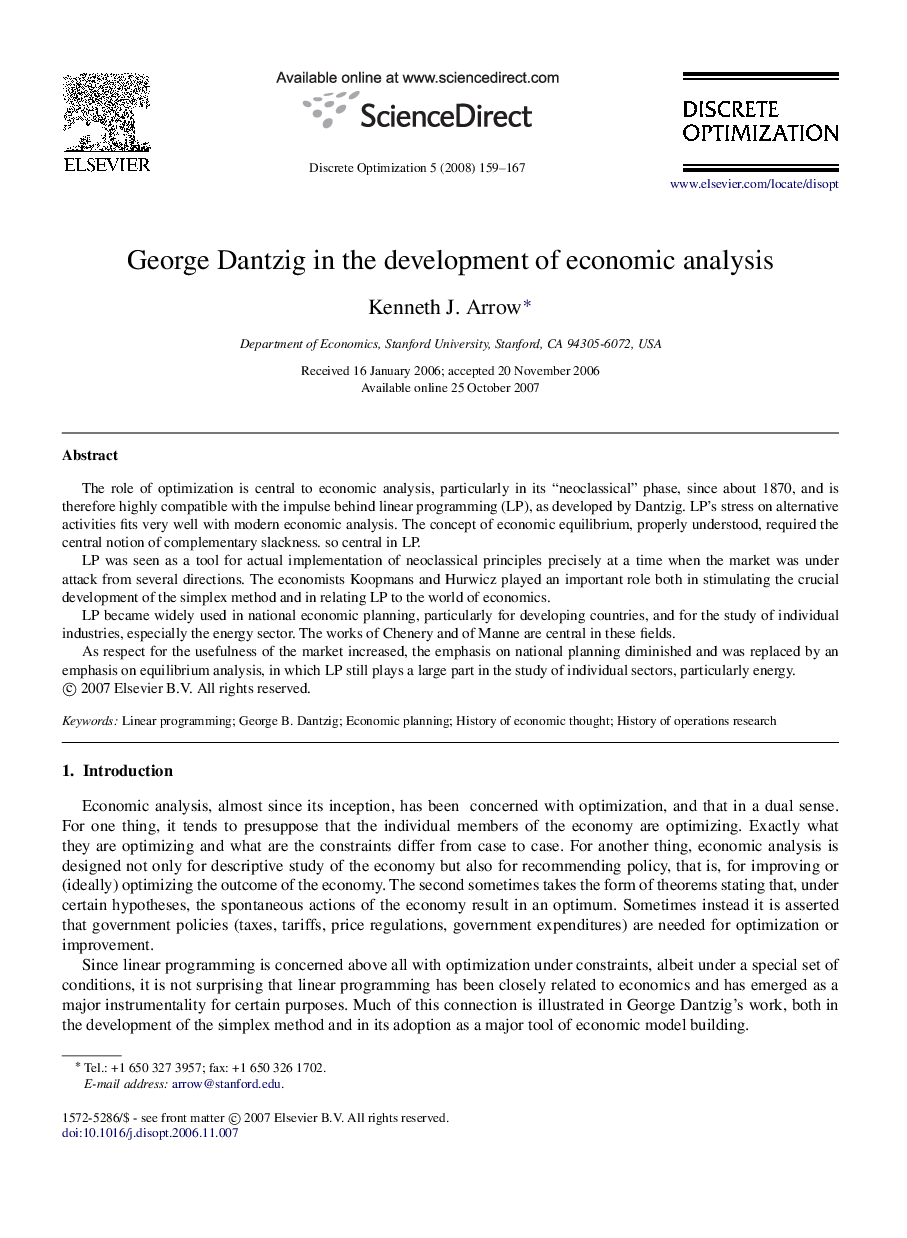| Article ID | Journal | Published Year | Pages | File Type |
|---|---|---|---|---|
| 1141833 | Discrete Optimization | 2008 | 9 Pages |
The role of optimization is central to economic analysis, particularly in its “neoclassical” phase, since about 1870, and is therefore highly compatible with the impulse behind linear programming (LP), as developed by Dantzig. LP’s stress on alternative activities fits very well with modern economic analysis. The concept of economic equilibrium, properly understood, required the central notion of complementary slackness. so central in LP.LP was seen as a tool for actual implementation of neoclassical principles precisely at a time when the market was under attack from several directions. The economists Koopmans and Hurwicz played an important role both in stimulating the crucial development of the simplex method and in relating LP to the world of economics.LP became widely used in national economic planning, particularly for developing countries, and for the study of individual industries, especially the energy sector. The works of Chenery and of Manne are central in these fields.As respect for the usefulness of the market increased, the emphasis on national planning diminished and was replaced by an emphasis on equilibrium analysis, in which LP still plays a large part in the study of individual sectors, particularly energy.
